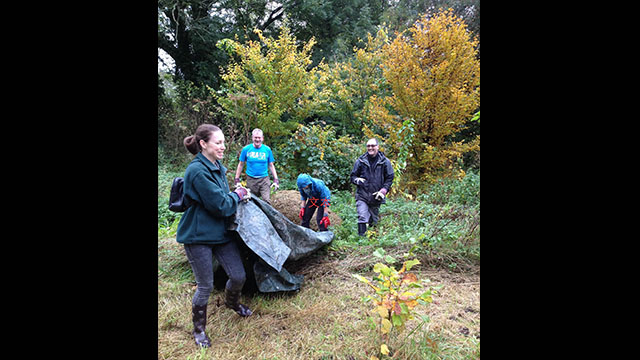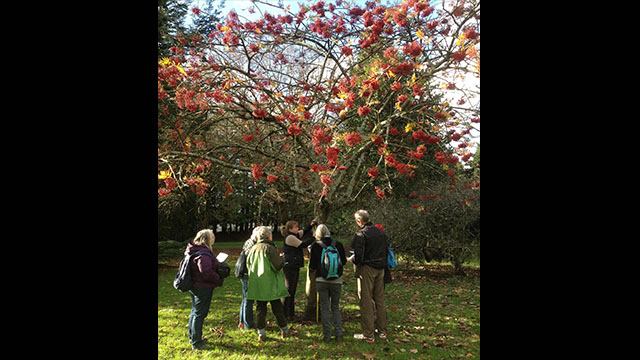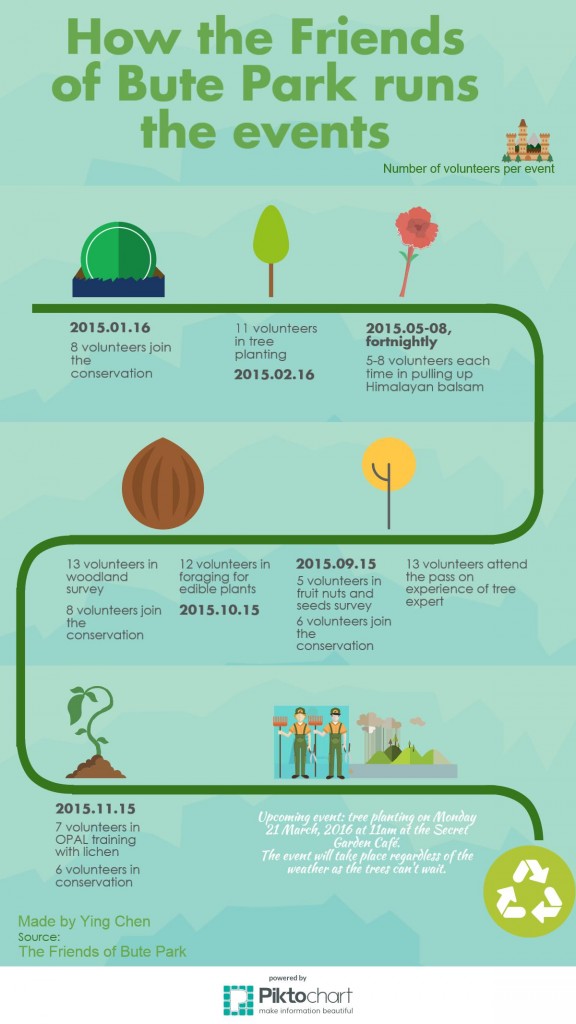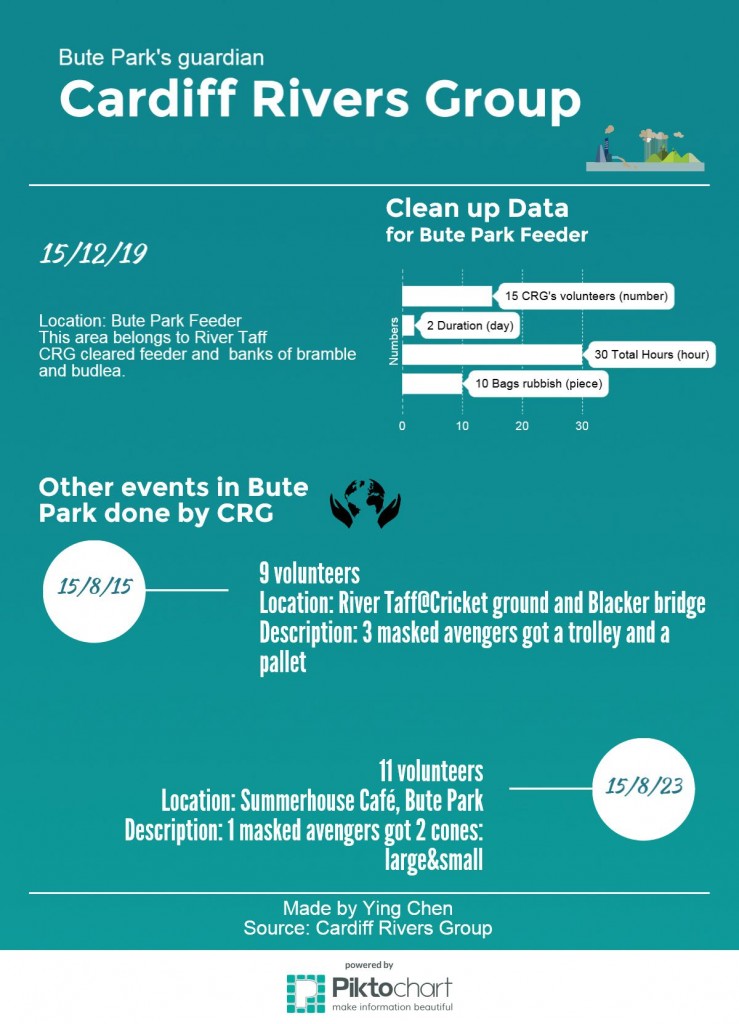Bute Park guardians plan to keep biodiversity and the public can get involved in cooperative environmental organizations in details.

Environmental protection organizations have resolved to work more closely with city council and Bute Park management to help enhance biodiversity in Bute Park botanical garden in the heart of the city.
The resolution comes in the wake of the spring season starting in March, when the area is expected to flourish in its biodiversity.
The mission
Spokespersons from the organizations said that they are increasingly concerned by the on-going activities that endanger the park’s ecosystem.
“We are trying to persuade the council not to mow everywhere,” says Jane Williams, the vice-chairman of The Friends of Bute Park (TFBP). She cited the example of the wildflowers that are often chopped off as a result of mowing. “Wildflowers are important for bees and insects. If we don’t have bees and insects, we will all die, because they are at the bottom of food chain.”

Williams also raised concerns about the wildlife in Bute Park, especially birds. “We want to persuade the council to look after the wildlife by protecting trees and planting more wildflowers in the shrubs,” she explains.
Blackweir Woods, a site of interest for natural conservation is the main workplace of The Friends of Bute Park. “Many people and cyclists go through it when they shouldn’t. The area is getting wider and wider,” says Williams. Another crisis in Blackweir is that “In summer, Himalayan balsam starts growing cover the bottom half of the park in Blackweir, which is an invasive species…we have to pull it up.”

TFBP has been involved in making walkways and cycle-routes using a technique called dead hedging. “We use sticks and coppiced wood to make a hedge along the side of the park to stop people from going over [and] keep them on the straight and narrow,” says Williams. This is done in order to minimize damage to the forest from trespassers.
The Bute Park management plan also points out that the “growth rates of coppice wood will be staggered by cutting on a three year basis.” This will allow for larger poles to be used as plant supports.
“Bute Park has an arboretum, so there are lots of ancient champion trees,” says Williams. According to the plan, the park contains more than 3,000 trees, mostly planted or regenerated over the last 150 years.
Benefits for volunteers and citizens
The organization has called upon people to get involved in the conservation activities. One of the benefits for volunteers, said Williams, was that they can get exercise while at work.
As for the public, “they can learn about the history and enjoy walking and picnicking in the park. Birds you will perhaps only find in the country are in the park, from kingfishers to dippers to goldcrests,” says Williams.
She rued about how the park wasn’t publicized enough as a tourist attraction, emphasizing the need for advertising Bute Park and enlarging the group of volunteers. The organization has a number of retired people but has trouble recruiting new volunteers.
“Quite a few people sign up but don’t come out to work with us,” Williams says. “We’ve got about a 100 members but not all of them turn up. We have tried getting a hold of university students and schools, but they didn’t come.” Outsiders are thus very much welcomed, she added.
Existing problems
“The problem is that we can’t communicate directly with the right person and can’t get all the communications running,” says Williams. Another issue is that they can only communicate with rangers in the park. Since the park is the council’s property, they need to have permission from the council for everything they do.
She explains: “We might look after an area and then they’ll put the path of a sports event through the woods, which undoes what we’ve been trying to do.”
Every month the organization has conservation meetings. On the day of the meeting last month, they planted 50 trees. They now plan to plant another 50 on the morning of 21 March in Blackweir, meeting at the Secret Garden Café. Tony Titchen, a dendrologist, will also be joining them later.
Pictures of Bute Park
Like The Friends of Bute Park, Cardiff Rivers Group (CRG) is another organization that will be scaling up their conservation activities. CRG organises events for various rivers, including the river Taff, which runs through Bute Park.
“Improving the habitat in and around the waterways of Cardiff has increased the diversity of wildlife and fauna, adding to the attractiveness and importance of these waterways,” says Dave King, secretary of the organization.
“Anywhere, where there is water and rubbish of any size, shape or quantity, we are there,” he added.
King says that they hope volunteers in CRG enjoy coming out with the organization and feel it is something that they wish to do. “They [can] choose how often and which events they’d like to attend and they can also meet like-minded people,” says Dave.
Making a Difference
The organizations believe that the public will see the difference after the successful completion of events and after the quality of the area has been improved. “Gone will be the unsightly rubbish, the stagnant pools in streams, to be replaced by free flowing water and the wildlife that this attracts,” says King.
The Cardiff Rivers Group works closely with the Cardiff Parks team, including the ranger service. CRG and TFBP are used to cooperating closely, having worked collaboratively in the past. New volunteers in two of the organizations are targeted via the press, social media and word of mouth.
You can track and follow upcoming events of The Friends of Bute Park and Cardiff Rivers Group on their official websites, all details will be updated continuously with any weather changes or emergency information.


